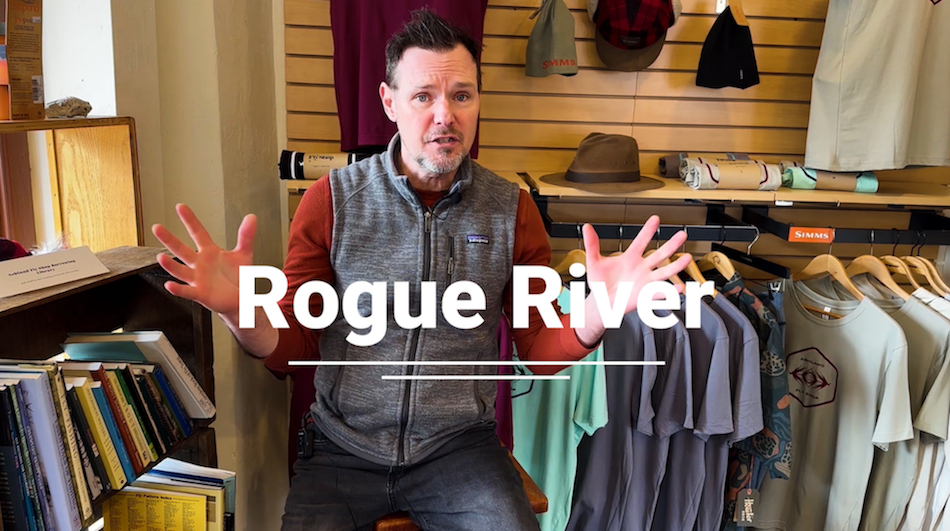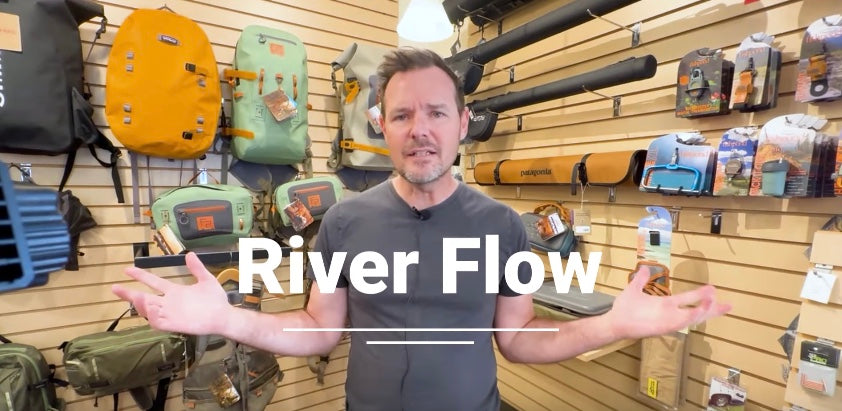Your Cart is Empty
free shipping on all domestic orders over $75
The Oregon Forest Practices Act, or “OFPA,” is a state law enacted in 1972 that manages state and private forestlands. This includes everything from logging to forest roads to aerial pesticide spraying.

An aerial view of Big Butte Creek, a tributary to the Rogue, flowing through private forestlands.
A stream buffer basically refers to how close trees can be cut near streams on private forestlands.
Under the OFPA, stream buffers are referred to as Riparian Management Areas, or “RMAs.” The OFPA requires different RMAs depending on different stream types. Streams are categorized by size (small, medium, and large) and by their beneficial use. Specifically, streams are categorized as having fish use and/or domestic water use (“Type F”), domestic water use but no fish use (“Type D”), neither fish use or domestic water use (“Type N”), or as a small or medium Type F stream that has salmon, steelhead, or bull trout present (“Type SSBT”). Further, the state of Oregon is divided into seven geographic regions. Most of the Rogue watershed falls within the Siskiyou georegion in southwestern Oregon.
As an example, a small stream (with an average annual flow of two cubic feet per second or less) located in the Wagner Creek watershed where fish are present would be a small Type F stream in the Siskiyou georegion and subject to specific stream buffer requirements (RMAs).
Although the stream buffer requirements are complex and vary by stream type and geography, it’s important to note that for small and medium fish-bearing streams, current forest practices often result in harvesting down to the 20-foot no-cut buffer. In the Siskiyou region, small fish-bearing streams require a 50-foot variable retention area and medium fish-bearing streams require a 70-foot variable retention area.

Comparison prepared by the Oregon Stream Protection Coalition. This graph shows only relevant stream buffer requirements for fish-bearing streams prior to the 2017 stream buffer rule.
At a fundamental level, trees near streams create more shade, which helps to keep streams cool.
The science is clear that removing trees near streams reduces shade and can increase stream temperature. A 2002 statewide sufficiency analysis and the results of a ten-year study by Groom et al. (the “RipStream” study)demonstrated that current stream buffer standards are not protective of stream temperature, allowing streams to become too warm in violation of the state water quality standard for temperature known as the Protecting Cold Water (“PCW”) water quality standard.
Read our comments to the Board of Forestry from May 2019 to learn more.
Not only did the RipStream study demonstrate that current stream buffer standards were resulting in violations of the Clean Water Act, but Oregon’s stream buffer standards remain the weakest on the West Coast.
As a result of the ten-year RipStream study and other analysis, the Board of Forestry moved forward in 2012 to develop new stream buffer standards for western Oregon. In a 2013 systematic review, Czarnomski et al. stated:
“The Oregon Board of Forestry (“Board”)made a finding of degradation that stream protections afforded to small- and medium-sized fish-bearing streams under the Forest Practices Act (FPA) were not likely protective of the Oregon Department of Environmental Quality (ODEQ) Protecting Cold Water (PCW) criterion. This criterion prohibits human activities, such as timber harvest, from increasing stream temperatures by more than 0.3 ºC, for all sources taken together at the point of maximum impact, at locations critical to salmon, steelhead or bull trout.” (Effectiveness of riparian buffers at protecting stream temperature and shade in Pacific Northwest Forests: A systematic review. Final Report September 2013. P. 1).
The new stream buffer regulations apply to small and medium streams that support salmon, steelhead, or bull trout (“SSBT”). The 2017 stream buffer rule effectively added 10-feet to the variable retention Riparian Management Area (RMA) for small and medium streams that support salmon, steelhead, or bull trout (“SSBT”). More specifically, a 60-foot variable retention area is now required for small SSBT streams and an 80-foot variable retention area is required for medium SSBT streams.
Critically, however, the Siskiyou georegion was excluded from the 2017 stream buffer rule. Although this region was originally included, it was ultimately left with the old, weaker standard.
With your support, we’ve advocated for the past four years for the Board of Forestry to improve stream buffer protections for the Siskiyou region to make sure that we’re not left with an outdated standard that does not reliably meet the Clean Water Act. Not only does this pose a risk to clean water, but it also threatens iconic salmon.
Within the Siskiyou region, the Rogue watershed provides habitat for the Southern Oregon/Northern California Coast (SONCC)coho listed as a threatened species under the Endangered Species Act in 1997.
In the recovery plan for SONCC coho, NOAA Fisheries specifically points to the inadequacy of current forest practices requirements in Oregon, stating:
“Because of the preponderance of private timberland and timber harvest activity in the range of this ESU [Evolutionarily Significant Unit], and potential adverse effects, careful consideration of state forest practices rules and regulations is prudent. At the time of listing, most reviews of the forest practice rules indicated that implementation and enforcement of these rules did not adequately protect coho salmon or their habitats(CDFG 1994, Murphy 1995, Ligon et al. 1999, IMST 1999).” (Final Recovery Plan for the Southern Oregon/ Northern California Coast Evolutionarily Significant Unit of Coho Salmon (Oncorhynchus kisutch). NOAA Fisheries. 2014. P. 3-54).
As just one example, NOAA Fisheries found that for the Illinois River population of SONCC coho, private forestlands had both the most potential to support coho salmon and at the same time had the least watershed protection. Specifically, NOAA Fisheries states that “although much of the habitat in the Illinois River is federally owned, the future threat of timber harvest in the next ten years is high because much of the habitat with the best potential to support coho salmon will be harvested using less protective management actions than those used on Federal lands.” (2014 SONCC 30-22). In other words, the inadequate protections under the Oregon Forest Practices Act, including stream buffer standards as identified by the IMST, remains a significant threat to the recovery of native salmonids in the Rogue watershed.
The Oregon Board of Forestry needs to update its rules to require the more protective stream buffer standard for the Siskiyou region that applies to the rest of western Oregon. The Board will decide whether or not they need to change these rules in July. The next two months are a critical window to show the Board of Forestry that you care about clean, cold water for iconic salmon and healthy communities.
How can you help from home before the July Board of Forestry decision?
Ask the Board of Forestry to improve protections for streams in the Siskiyou Region under the Oregon Forest Practices Act.
Amplify! Share this action on social media and get 3 friends to take action too.
Write a letter to the editor!If you’re interested in writing in to your local newspaper on this issue, email sara@rogueriverkeeper.org.
Donate!Your donations directly support our staff to write comments, testify before the Board, and advocate at every opportunity for stronger protections.
Although the coronavirus pandemic continues to re-shape life for many of us, there are still ways you can make a difference from home!

A February fishing report from Will, covering current and upcoming river and weather conditions on the Rogue, Applegate, Umpqua, and several rivers in northern California!

